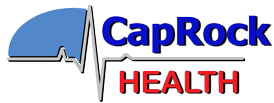“Heart attack” is the first thing that goes through people’s minds when they think of chest pain, but several medical conditions make your chest to hurt. While some causes of chest pain are serious – even life-threatening – many conditions that cause chest pain are not dangerous to your health.
Chest pain is discomfort you feel anywhere from your neck down to your abdomen, including your upper back. The pain may stay localized in your chest, or it may spread to your neck, abdomen and back.
Causes of Chest Pain
Any organ or tissue in your chest, including your heart, lungs, esophagus, muscles, nerves, ribs, and tendons, can cause chest pain. Some of the more serious causes are discussed below.
Angina
Angina is not a disease, but rather a symptom of a disease.
Angina is a type of chest pain that often feels like tightness, squeezing, or heavy pressure in your chest, but there are many variants. It is usually first noticed during strenuous exercise or significant emotional duress. The sensation may spread to your arm, back, shoulder, or jaw.
Angina is the result of narrowing or blockage of one of the coronary arteries, which are blood vessels that deliver oxygen-rich blood to the heart muscle. Blocking one of these arteries prevents the oxygen-rich blood from reaching the cells of the heart muscle.
While angina does not damage the heart, it indicates a developing disease process that often leads to heart attacks.
Heart Attack
Heart attacks often cause chest pain that feels like angina, with the pressure, tightness or squeezing sensation in your chest that may spread to your arm, shoulder, back, or jaw.
Heart attacks, also known as myocardial infarction (MI), are usually the result of a blood clot blocking one of the coronary arteries that has been narrowed due to disease. Severe blockage associated with heart attacks can cause oxygen starvation and death of heart muscle cells.
MIs are different from angina in that heart attacks cause long-lasting damage to your heart muscle. They can also lead to sudden death.
Aortic Dissection
A tear may occur in the wall of the aorta, which is a large blood vessel that moves blood from your heart to the rest of your body. This is more common in patients with severe heart disease or diseases involving connective tissue. The pain is most often described as a tearing sensation between the scapulae, but again, there are many variations. At times it can also be associated with numbness or weakness of the lower body.
Lung Problems
A pulmonary embolus is a blockage of an artery in your lung by a blood clot. These clots always develop elsewhere in the body then break loose and float through the veins back to the lungs. Symptoms usually involve pain, especially when taking a deep breath, and shortness of breath.
A collapsed lung occurs when air escapes from a lung and moves into the space between your lung and chest wall. The pressure from this misplaced air prevents your lung from expanding fully when you take a deep breath. Symptoms include sharp chest or shoulder pain that worsens when you try to take a deep breath, and shortness of breath.
Pneumonia can cause sharp chest pain, especially when you cough or take a deep breath. Pneumonia is the result of a lung infection. It frequently is accompanied by fever and production of dark phlegm with coughing.
When to Seek Help
While many causes of chest pain are not serious, it can be difficult to determine which are serious and which are not. Therefore, chest pain should always be evaluated by a doctor and most should be evaluated immediately especially if:
- You are over the age of 40
- The pain is accompanied by shortness of breath, fainting or faintness, sweating, nausea/vomiting, palpitations (irregular heartbeat), numbness, confusion or feeling of impending doom
- You are or were a smoker
- You are diabetic
- You have a family history of heart disease
- You have leg pain or swelling
- The pain developed during exertion or an emotional episode


